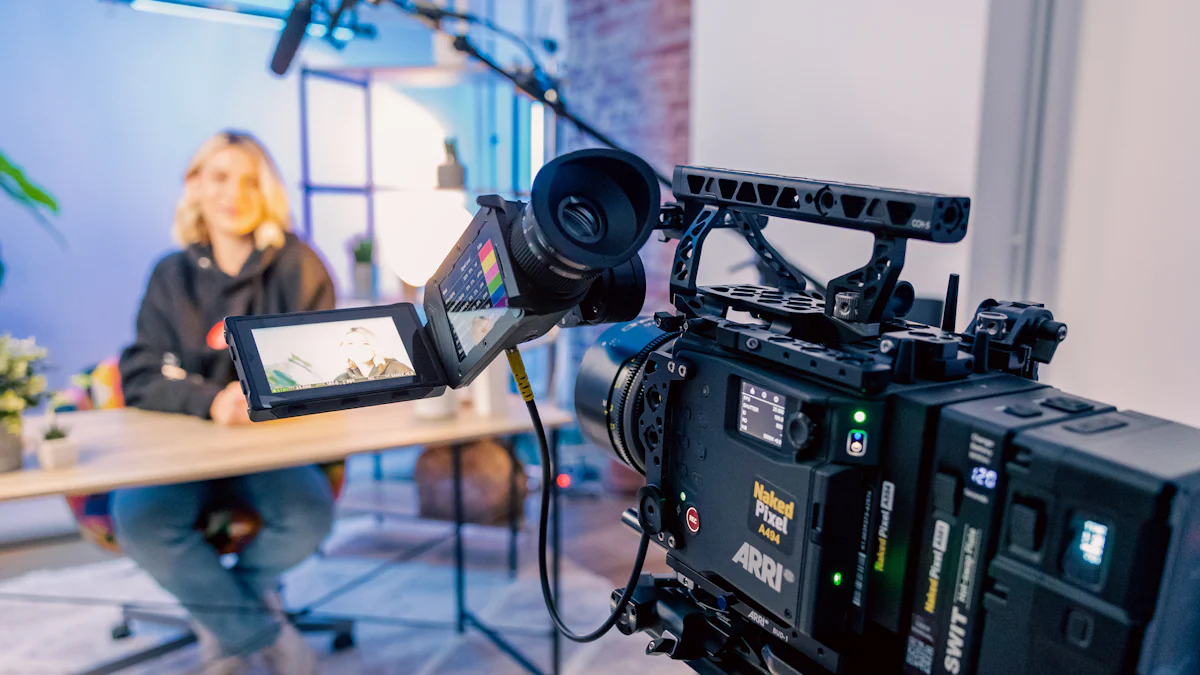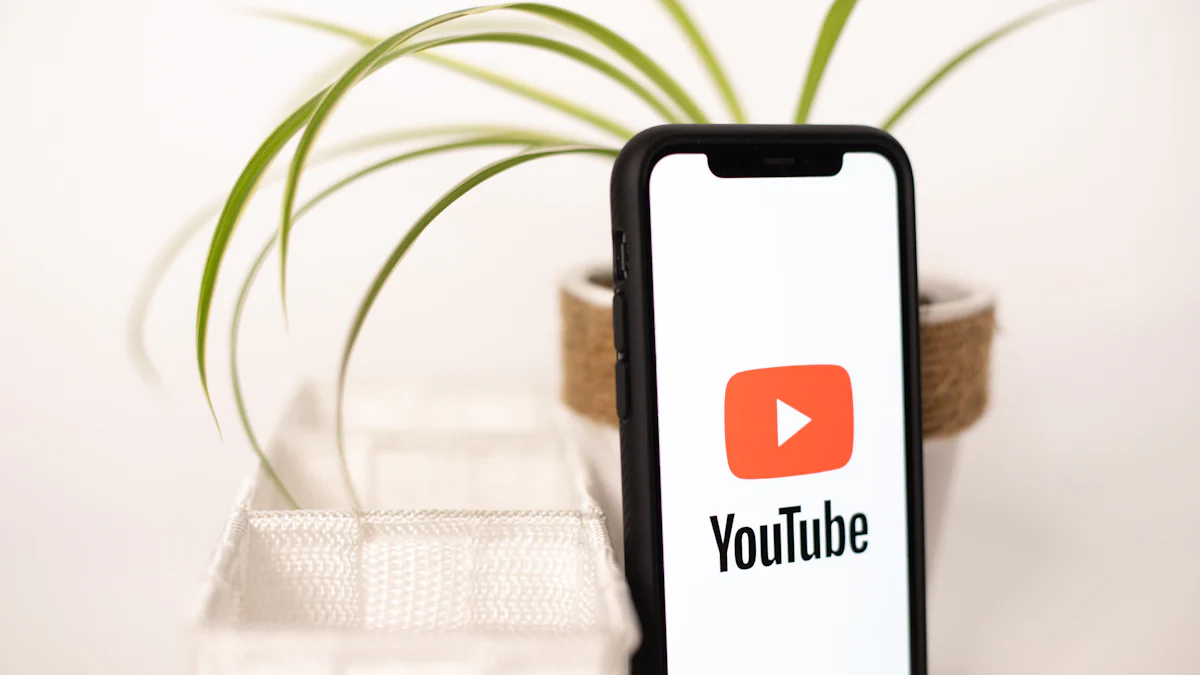How Many Content Creators Are There Today?

Have you ever wondered how many content creators are there on the internet today? The digital landscape is bustling with creativity, and it's estimated that there are around 207 million content creators worldwide. This number includes both professional and amateur creators who share their unique perspectives through various forms of content creation. From videos to blogs, creators are shaping the way we consume information and entertainment. With platforms like YouTube, Instagram, and TikTok, the opportunities for content creation are endless. As you explore this vibrant world, you'll find that content creators are at the heart of the internet's dynamic ecosystem.
Distribution of Content Creators Across Platforms

In today's digital age, content creation thrives across various platforms. Each platform offers unique opportunities and challenges for creators. Let's dive into the specifics of some popular content creation platforms.
YouTube
Number of creators and audience size
YouTube stands as a giant in the world of content creation platforms. With over 2 billion monthly active users, it provides a vast audience for creators. Millions of video content creators upload content daily, ranging from tutorials to entertainment. This platform's reach is unparalleled, making it a favorite for many aspiring creators.
Unique characteristics of YouTube creators
YouTube creators often focus on long-form video content, which allows for in-depth storytelling and engagement. The platform's algorithm rewards consistency and quality, encouraging creators to build a loyal community. YouTube also offers monetization options like ads and memberships, making it a lucrative choice for many.
Number of creators and audience size
Instagram boasts over 1 billion active users, making it a hotspot for social media influencers and creators. The platform's visual nature attracts creators who excel in photography, short videos, and stories. With a diverse audience, Instagram provides ample opportunities for engagement and growth.
Unique characteristics of Instagram creators
Instagram creators often focus on aesthetics and personal branding. They use features like stories and reels to engage their audience quickly. The platform's emphasis on visuals allows creators to showcase their creativity in unique ways. Instagram also offers monetization through brand partnerships and sponsored content, appealing to many influencers.
TikTok
Number of creators and audience size
TikTok has rapidly gained popularity, with over 1 billion active users worldwide. Known for its short-form video content, TikTok attracts a younger audience. The platform's algorithm promotes viral content, giving creators a chance to reach millions quickly.
Unique characteristics of TikTok creators
TikTok creators thrive on creativity and spontaneity. The platform encourages trends and challenges, allowing creators to engage with their audience in fun ways. TikTok's unique editing tools and effects enable creators to produce captivating content effortlessly. The platform's focus on short videos makes it ideal for quick, impactful storytelling.
Other Content Creation Platforms
When you think about content creation, platforms like Facebook and Twitter might not be the first that come to mind. However, they play a significant role in the digital landscape. These platforms offer unique spaces for creators to share their content and engage with their audience.
Overview of creators on platforms like Facebook, Twitter, etc.
Facebook, with its massive user base, provides a versatile platform for content creators. You can find everything from written posts to live videos. Creators often use Facebook to build communities and share diverse content types. Twitter, on the other hand, is known for its brevity. It’s a platform where creators can share quick updates, engage in conversations, and reach a broad audience with concise content.
Other platforms like Snapchat and LinkedIn also offer unique opportunities. Snapchat is popular among younger audiences, allowing creators to share ephemeral content that feels personal and immediate. LinkedIn caters to professional content creators, focusing on industry insights and networking.
Comparison of audience sizes and engagement
When comparing these platforms, Facebook stands out with its large audience size. It offers creators a chance to reach a wide demographic. However, engagement levels can vary. Instagram often leads in terms of engagement, with its visually-driven content capturing users' attention more effectively.
Twitter, while having a smaller audience compared to Facebook, excels in real-time engagement. It’s a platform where creators can quickly interact with their audience, making it ideal for timely content. Snapchat, though smaller in audience size, boasts high engagement rates among its users, particularly in the younger demographic.
In terms of monetization, YouTube and TikTok often lead the pack, offering creators substantial earning opportunities. However, platforms like Facebook and Instagram are catching up, providing various monetization tools to support creators.
"YouTube reclaimed the top spot from TikTok as the platform where creators earn the most income."
This highlights the competitive nature of content creation platforms and the diverse opportunities they offer. As a creator, choosing the right platform depends on your content type and target audience. Each platform has its strengths, and understanding these can help you maximize your reach and engagement.
Factors Influencing the Growth of Content Creators
The world of content creation is ever-evolving, driven by various factors that shape how creators engage with their audience. Let's explore some key elements that contribute to the growth of content creators today.
Technological Advancements
Impact of new tools and technologies on content creation
Technology plays a pivotal role in content creation. New tools and platforms have revolutionized how creators produce and share content. For instance, video editing software has become more accessible, allowing creators to craft high-quality videos without needing extensive technical skills. Social media platforms like Instagram and TikTok offer built-in editing tools, making it easier for creators to produce engaging content quickly.
Moreover, live streaming has gained popularity, enabling real-time interaction with audiences. This direct engagement fosters a sense of community and loyalty among followers. As technology continues to advance, creators can experiment with different types of content and adapt their strategies to suit various platforms.
Monetization Opportunities
Role of monetization in attracting new creators
Monetization is a significant driving force behind the surge in content creators. Platforms like YouTube and Instagram offer various monetization options, such as ad revenue, brand partnerships, and sponsored content. These opportunities provide creators with financial incentives to pursue content creation as a full-time career.
Additionally, platforms like Patreon and Substack allow creators to earn directly from their audience through subscriptions and donations. This direct support model empowers creators to focus on producing content that resonates with their audience, rather than relying solely on advertising revenue. As monetization strategies evolve, more individuals are drawn to the potential of earning a living through content creation.
Cultural Trends
Influence of cultural shifts on content creation
Cultural trends significantly impact content creation. As societal values and interests change, creators must adapt their content strategy to stay relevant. For example, the rise of sustainability and eco-consciousness has led to an increase in content focused on environmental issues. Creators who align their content with these trends can attract a dedicated audience interested in similar values.
Social movements also play a role in shaping content. Creators often use their platforms to raise awareness about important issues, fostering meaningful conversations and engagement. By staying attuned to cultural shifts, creators can develop a content strategy that resonates with their audience and drives engagement.
Challenges Faced by Content Creators

Navigating the world of content creation can be thrilling, but it also comes with its own set of challenges. As a creator, you might find yourself facing hurdles that can impact your journey. Let's explore some of these challenges and how they affect you.
Market Saturation
The digital landscape is bustling with creators, making it a crowded space. This saturation can pose significant challenges for both new and existing creators. You might wonder how to stand out when so many others are vying for the same audience's attention. The sheer volume of content available can make it difficult for your work to gain visibility.
To thrive in this environment, you need to focus on what makes your content unique. Consider honing in on your niche or area of expertise. As The Tilt describes, expert creators build media companies around their passions and monetize their content. By doing so, you can carve out a space for yourself in the crowded market.
Platform Policies
Changes in platform policies can significantly impact your content creation journey. Social media platforms frequently update their algorithms and guidelines, which can affect how your content is distributed and monetized. You might find that a change in policy suddenly reduces your content's reach or alters your monetization strategy.
Staying informed about these changes is crucial. Regularly check updates from the platforms you use and adapt your strategies accordingly. Engaging with other creators can also provide insights into how they're navigating these shifts. Collaboration and sharing experiences can help you find new ways to maintain your audience's engagement and ensure your content continues to thrive.
"YouTube reclaimed the top spot from TikTok as the platform where creators earn the most income."
This quote highlights the dynamic nature of content creation platforms and the importance of staying adaptable. By keeping up with policy changes and leveraging new tools, you can continue to grow and succeed in the ever-evolving world of content creation.
You've explored the vibrant world of content creation, where creators shape how we consume information and entertainment. The digital landscape offers endless opportunities across platforms like YouTube, Instagram, and TikTok. As technology advances, new tools empower you to craft engaging content with ease. Monetization options attract more creators, turning passion into a career. However, challenges like market saturation and platform policies require adaptability. Looking ahead, expect growth and innovation in content creation. Stay attuned to trends and embrace new tools to thrive in this dynamic media environment.
FAQ
How many content creators are there globally?
You might be surprised to learn that there are approximately 207 million content creators worldwide. This number includes both professional and amateur creators who share their unique perspectives through various forms of content creation.
What platforms do content creators use the most?
Content creators flock to platforms like YouTube, Instagram, and TikTok. These platforms offer vast audiences and monetization opportunities, making them popular choices for creators looking to share their content and grow their following.
How do content creators make money?
Monetization options abound for content creators. You can earn through ad revenue, brand partnerships, and sponsored content on platforms like YouTube and Instagram. Additionally, platforms like Patreon and Substack allow you to earn directly from your audience through subscriptions and donations.
What challenges do content creators face?
Content creators often grapple with market saturation and platform policy changes. With so many creators vying for attention, standing out can be tough. Plus, changes in platform algorithms and guidelines can impact how your content is distributed and monetized.
How is technology impacting content creation?
Technology plays a crucial role in content creation. New tools and platforms have revolutionized how you produce and share content. For instance, video editing software has become more accessible, allowing you to craft high-quality videos without needing extensive technical skills.
What role does AI play in content creation?
AI-powered tools are increasingly used to boost productivity and save time. These tools help generate content with minimal human intervention, catering to the rising demand for AI-generated content across industries like marketing, e-commerce, education, and entertainment.
What is the future of the creator economy?
The creator economy is booming, with projections indicating growth from $156.37 billion in 2024 to $528.39 billion by 2030. This growth suggests an exciting future for content creators, with expanding monetization options and strategic content diversification.
How can content creators stay relevant?
Staying ahead of the curve in digital content creation is crucial. By predicting future trends and adapting your strategies, you can remain relevant and innovative in the ever-evolving landscape of digital content creation.
Are there opportunities for new content creators?
Absolutely! Despite a slight decline in the number of independent creators in 2023, the outlook for future growth remains positive. Increasing digitalization provides opportunities for you to reach broader audiences and engage with them in innovative ways.
How do cultural trends influence content creation?
Cultural trends significantly impact content creation. As societal values and interests change, you must adapt your content strategy to stay relevant. Aligning your content with current trends can attract a dedicated audience interested in similar values.
See Also
Unlock Your Potential as a UGC Content Creator
Advantages and Disadvantages of TikTok Influencer Promotions
Comparative Study of Brand Ambassador Earnings by Industry
